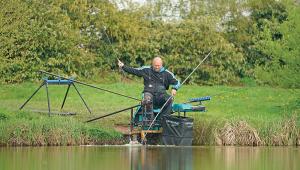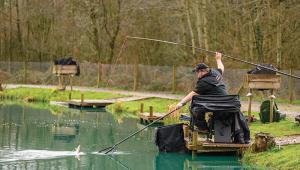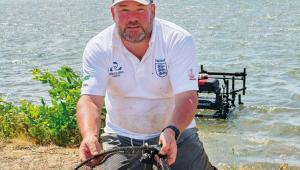Winning Style

Garbolino Lindholme’s Alex Docherty reflects on the differing approaches that top anglers take to winning matches..
Working at Lindholme Lakes places me in the fortunate position that I get to see Aaron Grantham every weekend… not to mention many top match anglers. This has really helped me in my own fishing and I’ve learnt loads through the years by watching and speaking to them (the anglers, not Aaron). One thing that constantly gets me thinking, though, is how differently each angler fishes! Yet they all seem to catch fish and do well in the matches.
Two of the finest Lindholme has to offer are John Allerton and Nick Speed. Both pick up lots of money throughout the year but approach their pegs completely differently. Speaking to John shows he pays a lot of attention to feeding the correct bait and presenting a rig well, which often leads to him fishing shorter than most but still sacking up!

Nick, on the other hand, fishes longer, often on multiple lines on the rod or the pole. This means he will cover more water, so in his opinion gives him a better chance of catching fish and doing well in the match.
So this creates the question: which way is the right way? The beauty of this is there is no correct answer. Each day can be different and this is what keeps us fishing. If we went every time knowing we’re going to catch 12 fish short and then eight on the bomb we’d be bored after around three trips! So what is it that sets these two anglers apart from the rest, meaning they frame so consistently at Lindholme from good and bad areas and on a variety of methods?
In my opinion it must be the decisions they make: When, how and how much to feed, as well as where to fish, all leading to changes in catch rates and extra weight come the end when we weigh in. Last summer Nick won eight matches in a row, so surely this dispels the myths of drawing fliers or him sitting on a pile of fish. This was because he made the correct decisions to fish in the right depth of water in which the fish felt happy feeding, which at the time was either up to an island with the Method feeder or down the edge in the shallower water.
Recently John has been framing very regularly and this again relates to fishing where the fish are happy to feed, and ensuring the bait is presented correctly.
So even though both fish very differently there are elements of similarity, showing that regardless of whether you target only a couple of lines or lots of them the important bit is fishing in the correct depth and where the fish are happy to feed.
Again speaking to Nick and John it is amazing how simply yet completely differently the pair fish. Nick fishing 0.10mm hooklengths to 18 and 20 hooks for the carp and F1s, which many would consider light, whereas John takes this one step further by fishing 0.08mm and 20 or 22 hooks, and still manages to land some great big specimens on this setup!
This simplicity is also reflected in rigs, with very simple shotting and the same patterns and sizes being used for a lot of baits and methods.
Their knowledge of the venue and ability to decide where to fish often means these two anglers in particular often get the best out of their pegs… which isn’t good in summer as it takes a while to weigh in – it’s hard work when everyone has 100lb!
It also allows them to frame from unfancied areas or win their sections! Something that is often difficult considering the standard of local angler fishing the lakes every week.
One thing I have learnt is that rather than copying how they fish, instead adapt methods or “steal” ideas and apply them to your own fishing. If you simply copy what others do you’ll struggle to beat them at it as they’re always one step in front, but if you adapt it to suit your style of fishing you may just be on to a winner.
Answering the question of how so many top anglers all approach their pegs so differently yet do so well: they find where and how the fish want to feed and adapt the method accordingly to suit the way in which they fish. For some this might mean targeting lots of lines and others focusing on fewer but ensuring all the finer details are absolutely perfect to extract the maximum from their peg.
It’s definitely something worth thinking more deeply about – when to target lots of lines and when to focus on fewer areas but ensuring every detail is correct to help induce a bite.
Over the years, working at Lindholme you see different top-class anglers attack the pegs so differently but still do well. Next time you’re on the bank give it a thought, and remember that everyone does it differently, so there are no wrong answers!
Like what you see?
Or buy a single issue
- Log in or register to post comments















